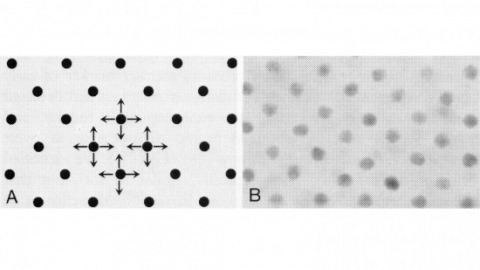Filter
Publication Date
Type of Publication
3 Publications
Showing 1-3 of 3 resultsA nuclear gene (QCR9) encoding the 7.3-kDa subunit 9 of the mitochondrial cytochrome bc1 complex from Saccharomyces cerevisiae has been isolated from a yeast genomic library by hybridization with a degenerate oligonucleotide corresponding to nine amino acids proximal to the N terminus of purified subunit 9. QCR9 includes a 195-base pair open reading frame capable of encoding a protein of 66 amino acids and having a predicted molecular weight of 7471. The N-terminal methionine of subunit 9 is removed posttranslationally because the N-terminal sequence of the purified protein begins with serine 2. The ATG triplet corresponding to the N-terminal methionine is separated from the open reading frame by an intron. The intron is 213 base pairs long and contains previously reported 5’ donor, 3’ acceptor, and TACTAAC sequences necessary for splicing. The splice junctions, as well as the 5’ end of the message, were confirmed by isolation and sequencing of a cDNA copy of QCR9. In addition, the intron contains a nucleotide sequence in which 15 out of 18 nucleotides are identical with a sequence in the intron of COX4, the nuclear gene encoding cytochrome c oxidase subunit 4. The deduced amino acid sequence of the yeast subunit 9 is 39% identical with that of a protein of similar molecular weight from beef heart cytochrome bc1 complex. If conservative substitutions are allowed for, the two proteins are 56% similar. The predicted secondary structure of the 7.3-kDa protein revealed a single possible transmembrane helix, in which the amino acids conserved between beef heart and yeast are asymmetrically arranged along one face of the helix, implying that this domain of the protein is involved in a conserved interaction with another hydrophobic protein of the cytochrome bc1 complex. Two yeast strains, JDP1 and JDP2, were constructed in which QCR9 was deleted. Both strains grew very poorly, or not at all, on nonfermentable carbon sources and exhibited, at most, only 5% of wild-type ubiquinol-cytochrome c oxidoreductase activity. Optical spectra of mitochondrial membranes from the deletion strains revealed slightly reduced levels of cytochrome b. When JDP1 and JDP2 were complemented with a plasmid carrying QCR9, the resulting yeast grew normally on ethanol/glycerol and exhibited normal cytochrome c reductase activities and optical spectra. These results indicate that QCR9 encodes a 7.3-kDa subunit of the bc1 complex that is required for formation of a fully functional complex.(ABSTRACT TRUNCATED AT 400 WORDS)
In the development of multicellular organisms a diversity of cell types differentiate at specific positions. Spacing patterns, in which an array of two or more cell types forms from a uniform field of cells, are a common feature of development. Identical precursor cells may adopt different fates because of competition and inhibition between them. Such a pattern in the developing Drosophila eye is the evenly spaced array of R8 cells, around which other cell types are subsequently recruited. Genetic studies suggest that the scabrous mutation disrupts a signal produced by R8 cells that inhibits other cells from also becoming R8 cells. The scabrous locus was cloned, and it appears to encode a secreted protein partly related to the beta and gamma chains of fibrinogen. It is proposed that the sca locus encodes a lateral inhibitor of R8 differentiation. The roles of the Drosophila EGF-receptor homologue (DER) and Notch genes in this process were also investigated.

